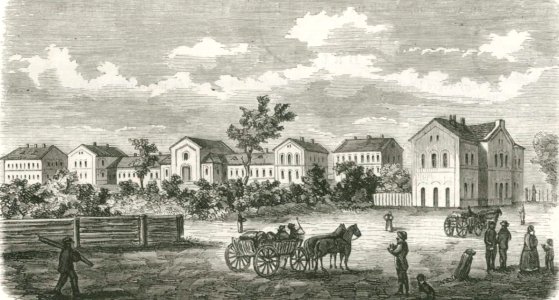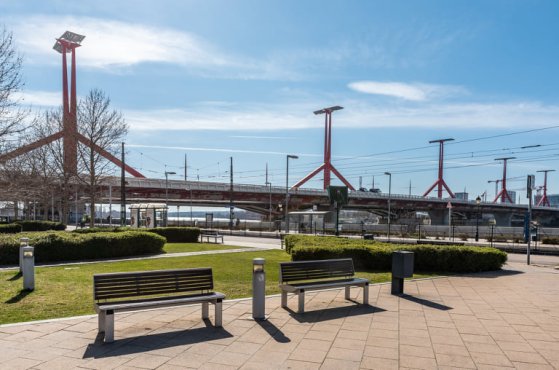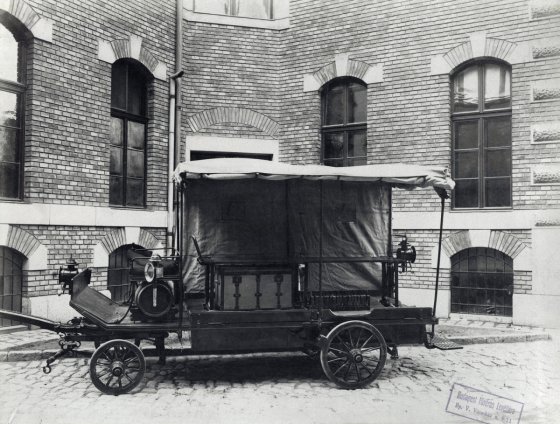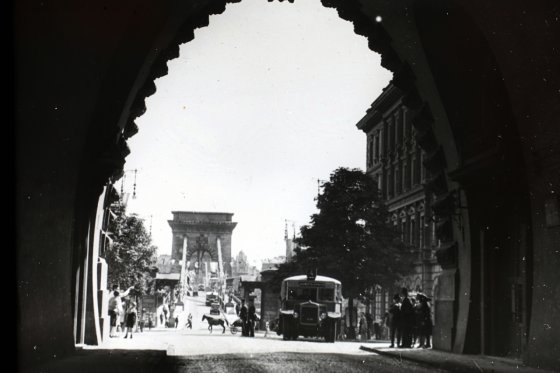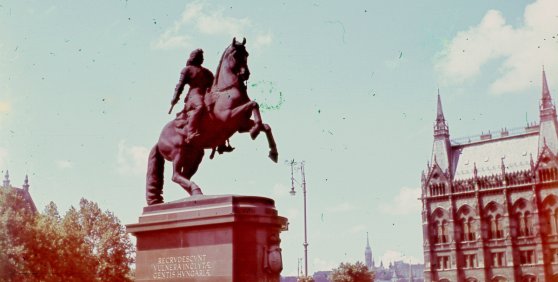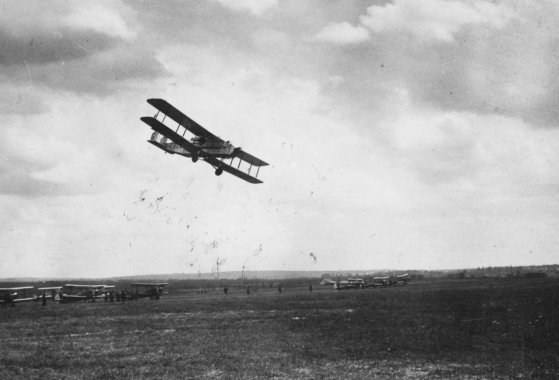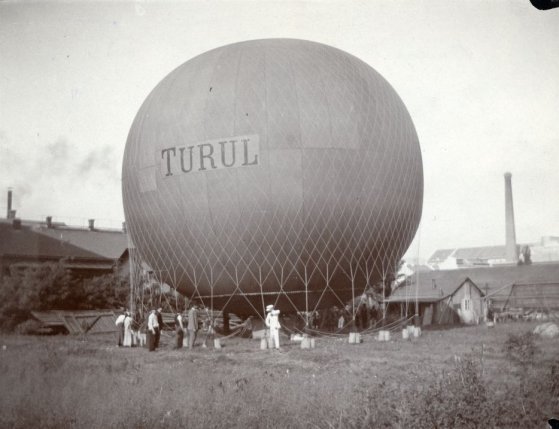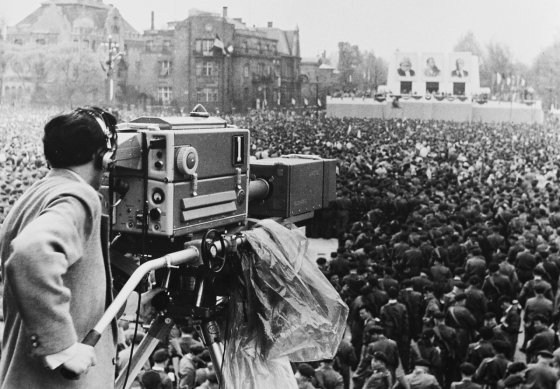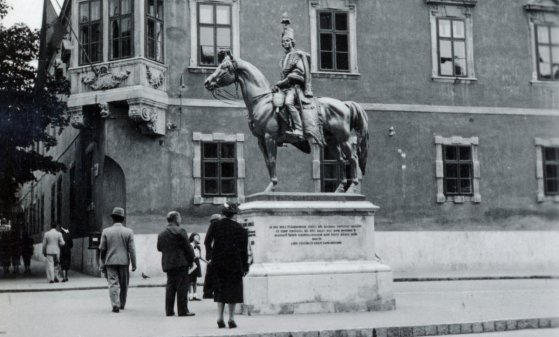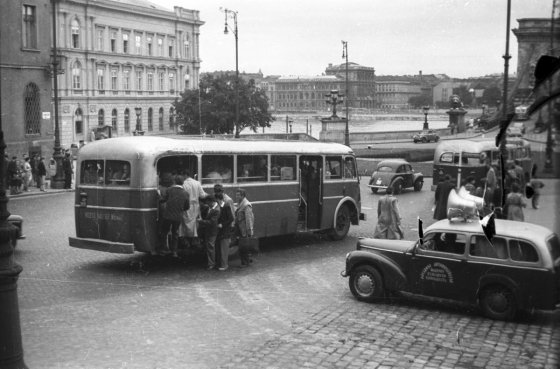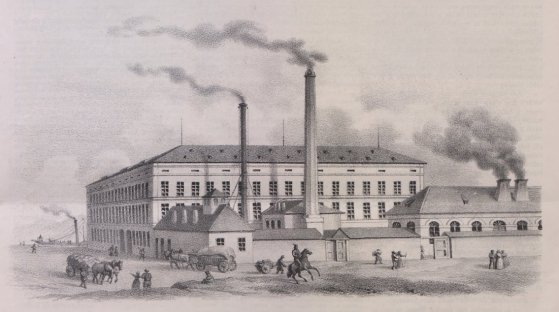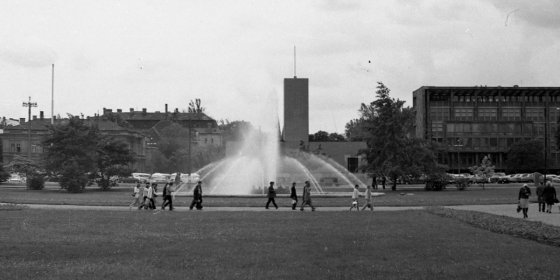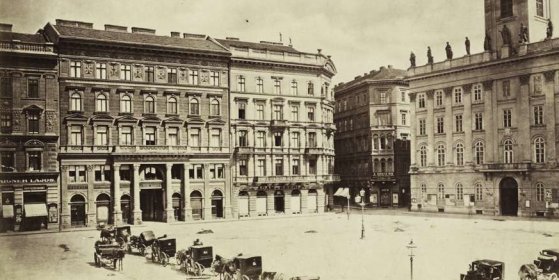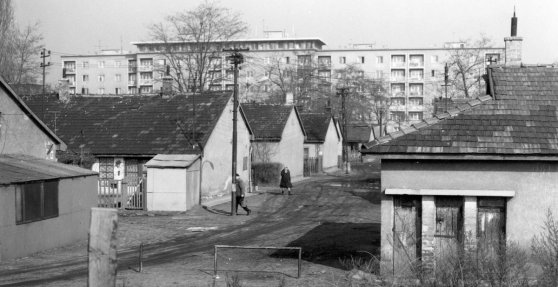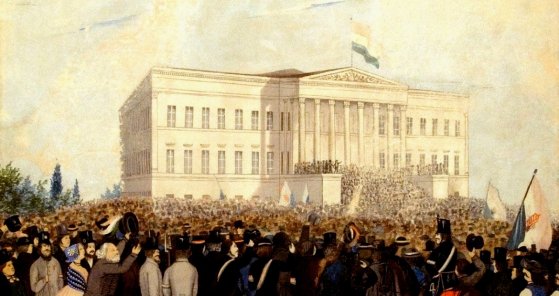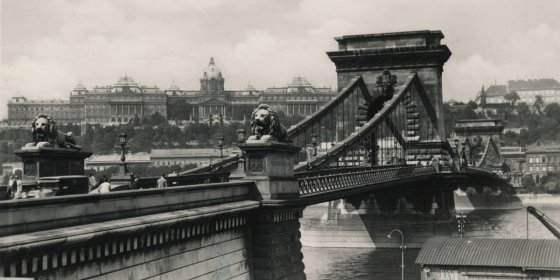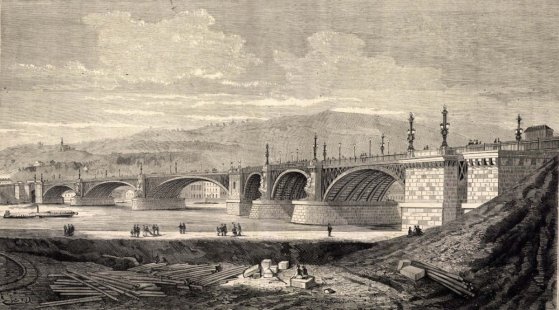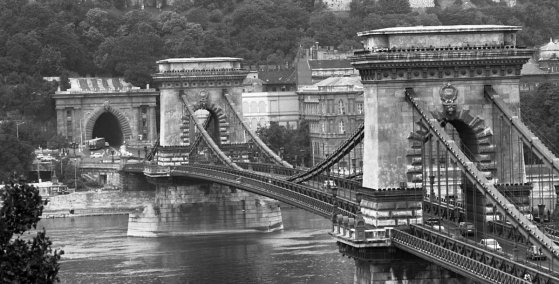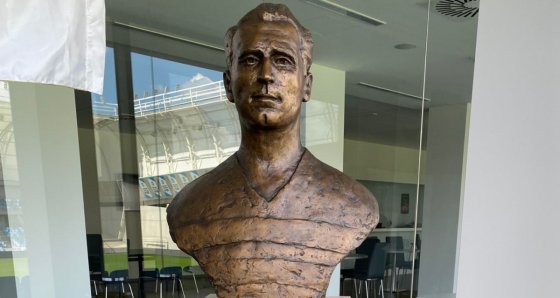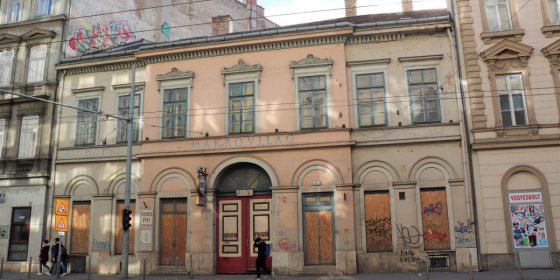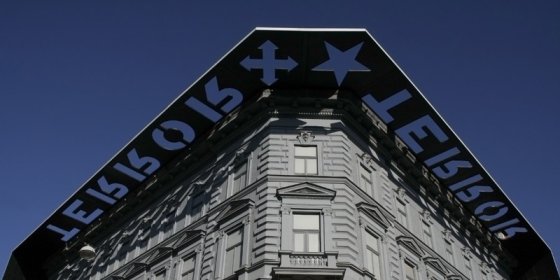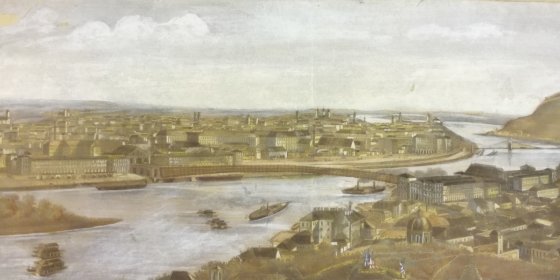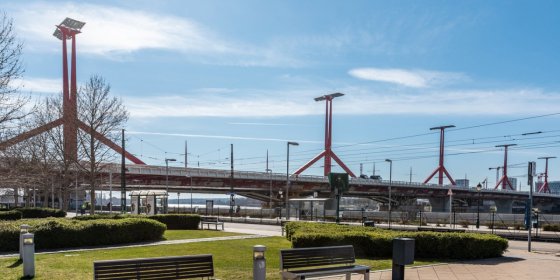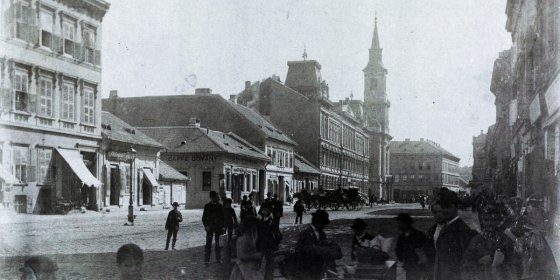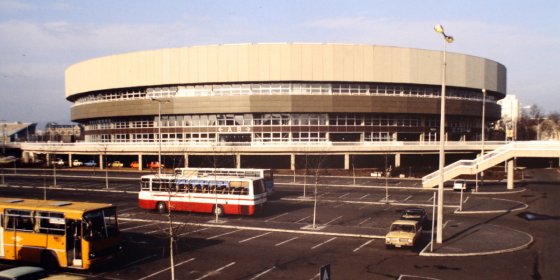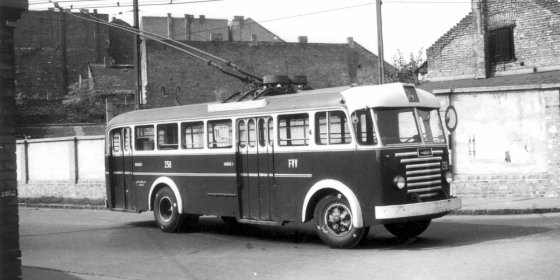 The „intertwined history” of the bridges and the city of Budapest
Which ideas and events have shaped the fate of bridges of Budapest and the cityscape? Alongside many other interesting facts, this question is also answered this newly published book by the Budapest City Archives, which introduces the history of bridges in Budapest.
The „intertwined history” of the bridges and the city of Budapest
Which ideas and events have shaped the fate of bridges of Budapest and the cityscape? Alongside many other interesting facts, this question is also answered this newly published book by the Budapest City Archives, which introduces the history of bridges in Budapest.
histories
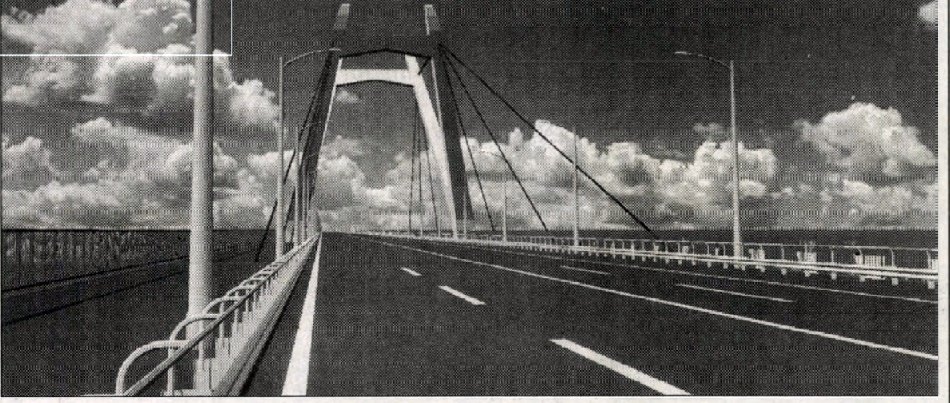 Can the Aquincum Bridge be car-free? - Only after the construction of the next section of the M0 will there be a new Danube bridge between Óbuda and Újpest
Can the Aquincum Bridge be car-free? - Only after the construction of the next section of the M0 will there be a new Danube bridge between Óbuda and Újpest
May 21, 2022 at 1:00 PM
Once again, the issue of the Aquincum Bridge is on the agenda, and the capital is asking the public for their opinion on what the new Danube crossing should look like and between which areas should it create transport connections. Although its construction is not expected in the near future, as it is conditional on the construction of the section of the M0 motorway between roads 10 and 11, and it is also preceded by the Galvani Bridge, but a suggestion has already been debated: alternatives include a plan of a car-free bridge.
Trains departing from the 155-year-old Józsefváros railway station connected Losonc to Budapest
May 19, 2022 at 1:00 PM
The Józsefváros railway station, the third of Budapest's railway stations, was originally built for a private railway that later went bankrupt. The company was taken over by the state, and this decision brought about significant changes in Hungarian transport policy.
Plans were already made for today's Rákóczi Bridge 50 years ago
May 15, 2022 at 9:00 AM
A bridge was designed in the 1970s to replace the former Lágymányosi, now Rákóczi Bridge, and a tender was also announced for the task. The winning plan would have been a concrete bridge, but ideas later changed about both the structure and the role of the bridge, so it was finally built only decades later, in a completely different form. The results of the first competition were presented to the general public 50 years ago, in May 1972.
We can count on paramedics in Budapest for 135 years - The first ambulances were still drawn by horses
May 10, 2022 at 9:00 AM
We can count on the help of paramedics in Budapest for 135 years now. The Budapest Volunteer Ambulance Association started its operation on 10 May 1887 in today's Szent István Square, but soon after, they were able to move into their new headquarters on Markó Street. The paramedics initially rode in horse-drawn carriages, but in 1902, 120 years ago, they already rushed in an electric car to help those in trouble.
The first Zero Kilometre Stone was placed in Clark Ádám Square 90 years ago
May 7, 2022 at 10:00 AM
All roads lead to the Chain Bridge. This saying is true in that the length of the main roads starting from Budapest is calculated in kilometres from here, the Chain Bridge, more precisely from Clark Ádám Square on the Buda side. To mark this, the first 0-kilometre stone was inaugurated here on 7 May 1932, 90 years ago.
The statue of Ferenc Rákóczi II was unveiled in Kossuth Square 85 years ago
May 5, 2022 at 11:00 AM
The statue of Ferenc Rákóczi II has been standing on Kossuth Square for 85 years now. Its erection was decided on the 200th anniversary of his death, and two years later, in 1937, the statue stood. Since then, only the inscriptions have been changed, sometimes for political or grammatical reasons.
We have been able to fly abroad from Budapest as a passenger for a hundred years
May 3, 2022 at 11:00 AM
Today, we take it for granted to buy a plane ticket and simply get on the plane. Few think about since when we can do this. And now we are celebrating an anniversary: our predecessors were first able to board a passenger plane in Budapest 100 years ago. Since then, the industry and tourism have also undergone tremendous development: almost 16 million passengers turned up at Liszt Ferenc Airport in the year before the epidemic.
With a balloon over Budapest - the Turul took off 120 years ago
May 1, 2022 at 10:00 AM
The hot air balloon lookout opened in Városliget is not the first such contraption in Budapest: it was already possible to rise above the city with a balloon at the millennium exhibition. However, the balloon, Turul, launched 120 years ago on 1 May 1902, was not intended to entertain the public, but to do research. In addition to meteorological observations,we can also thank it for a number of aerial photographs, which show how Budapest looked from above at the beginning of the 20th century.
The first official program was broadcast by Hungarian Television 65 years ago
April 30, 2022 at 9:00 AM
Television is nearly a hundred-year-old invention that many Hungarian researchers worked on in the beginning. In Hungary, however, work began only in the 1950s to enable Hungarian broadcasting in Hungarian households. The experimental broadcasts started in 1956, and after the revolution, on the evening of 26 April 1957, a film was shown on television, but the first "official" broadcast, the Heroes' Square parade, was broadcast by the Hungarian Television only on 1 May 1957, for political reasons.
The equestrian statue of András Hadik was unveiled in the Buda Castle 85 years ago
April 28, 2022 at 9:00 AM
The work of the sculptor György Vastagh Jr., who also made the Csikós statue, was unveiled in 1937 in the small square at the intersection of Úri Street and Szentháromság Street in the presence of the country's leaders at the time. The statue commemorating the former warlord of the Habsburg Empire, András Hadik and the 3rd Hussar Regiment, has been associated with a strange custom among graduating students of the Műegyetem (Budapest University of Technology) since the 1950s.
Sixty years ago, Budapest was at a crossroads - the transport of the capital in the 1960s
April 23, 2022 at 2:00 PM
Budapest's traffic was at a crossroads 60 years ago as well as now. Experts sought answers to questions about how much the then outdated public transport network needs to be developed and how to prepare the city for the expected car traffic. Studies have also helped to make these decisions. Based on a work published 60 years ago, we present the transport dilemmas of Budapest at that time.
One of the first Hungarian machine factories operated in Lipótváros
April 21, 2022 at 9:30 AM
One of the first machine factories in Pest practically operated as a subsidiary of the József Rolling Mill, and for economic reasons it became an independent factory, which then became one of the first machine factories in Hungarian industry 175 years ago. Unfortunately, it was not long-lived, but its impact was significant.
Fifty years ago: severe water shortages in Budapest
March 30, 2022 at 9:00 AM
As in the current drought, Hungary and Budapest was hit by a significant water shortage fifty years ago, exacerbated by an outdated water supply network and regular pipe ruptures. The situation was so critical in 1971–1972 that the water consumption of industrial plants was restricted and the population felt water shortages, as in many places there was no water flowing from the taps, so for a while the water supply had to be secured by water carts.
The first Danube bridges in Budapest were designed by foreigners - English and French engineers were commissioned
March 25, 2022 at 9:00 AM
Although the construction of bridges has a long tradition in Budapest, in the XIX. century there was not enough expertise and technology at home for this job for a long time. Foreign engineers also originally built the Chain Bridge, the Margit Bridge and the Railway Bridge. The first completely Hungarian Danube crossing was the Ferenc József Bridge, which was built in 1896 for the celebration of the millennium of Hungary.
A pharmacy was opened in the Inner City of Pest more than three hundred years ago
March 19, 2022 at 12:00 PM
On the plot of the corner building at 32 Váci Street - 2 Kígyó Street after the Turkish occupation the first public pharmacy in Pest, the Szentháromság [Holy Trinity] pharmacy operated. Its builder and owner was the pharmacist, Heinrich Siegfried Herold. The plot is well-located and has housed a number of shops and high-ranked tenants in recent centuries since the pharmacy moved out: the fabric store addressed to the Green tree [a Zöld fához in Hungarian], the sign of which was painted by Miklós Barabás, and a bookshop of the famous bookseller family, the Kiliáns where also housed here. The building, which is still in a very dilapidated condition, is under the district's unique protection and is a prominent archaeological site.
Flowery housing estate from the world of deep poverty - The former emergency houses of Marie Valerie housing estate were demolished 65 years ago
March 17, 2022 at 10:00 AM
The József Attila housing estate is one of the districts of Budapest with the most green areas, trees and bushes, in 2012 it even won the title of the most flowering housing estate in the country. However, fewer and fewer people here know that there was a time when this area was not known for its comfort. Its name was also different, which in itself revealed a lot about the conditions here: Marie Valerie emergency housing estate.
It was decided 245 years ago that the oldest university in Hungary was moving to Buda
March 16, 2022 at 9:00 AM
The oldest, still operating university in Hungary, the legal predecessor of today's Eötvös Loránd University, Semmelweis University and Pázmány Péter Catholic University, began operating in Nagyszombat [today Trnava] in 1635. Maria Theresa decided to move it, and although it was suggested that it should be placed in the Invalidus Palace in Pest, in the building of today's Central Town Hall, it was finally moved to Buda, into the Castle, in 1777.
Sándor Petőfi lived in several places around the National Museum
March 13, 2022 at 11:00 AM
At the beginning of March 1848, the National Museum was one of the most important places in the life of the youth of March, including Sándor Petőfi. Half a decade earlier, Petőfi's life was also connected to this area at several points, as the main locations of his stay in Pest in 1843 and 1844 can be found in the area around the museum. There were several buildings in the area that no longer exist today, where the poet visited for a short time or was just renting accommodation.
After the war, the coat of arms of the nobility only remained on the Buda side of the Chain Bridge
March 11, 2022 at 11:00 AM
Two coats of arms were placed on the Chain Bridge 170 years ago, three years after it opened. Family, noble symbols that referred to the two people without whom the first permanent Danube bridge connecting Pest and Buda would not have been built. They were the greatest Hungarian and a wealthy banker, István Széchenyi and György Sina, to whom the general meeting of the Chain Bridge Company wanted to give gratitude this way.
The look of the second bridge of Budapest was decided 150 years ago
March 8, 2022 at 11:00 AM
The result of the design competition for the Margit Bridge was decided on 9 March 1872, 150 years ago. The winner became Ernest Gouin’s elegant arch bridge idea. The bridge south of Margit Island was to be built with a representative purpose, hoping to raise the light of the about-to-be united Budapest, and help make it a Vienna-like capital of the country. Despite large-scale ideas, there has been a petty discussion about cutting construction costs.
The Chain Bridge was completely renovated 35 years ago, but the Kádár coat of arms was not replaced
March 4, 2022 at 9:00 AM
The Chain Bridge was last renovated in 1986–1988 before the current reconstruction, and the crossing was closed to cars on 1 March 1987. The renovation affected almost every part of the bridge, which was already in extremely poor condition at the time: the rusty chains as well as the stone surfaces and ornaments of the gates and the structure of the roadway. Although the Hungarian coat of arms with a crown-laurel wreath was already adorned on the candelabras, the idea of exchanging the coats of arms of Kádár on the pylons had to wait for years.
Nándor Hidegkuti, to the miracle striker of the Golden Team, was born in Óbuda a hundred years ago
March 3, 2022 at 10:00 AM
The excellent footballer of MTK, who became the Olympic champion in 1952 with the legendary Golden Team, started playing football with a rag ball next to the brick factory in Újlak. He had come a long way from Óbuda to world fame, but he managed to achieve what many longed for. Nándor Hidegkuti was born a hundred years ago.
From a noisy apartment building to the palace of the Academy: János Arany lived in many places in Pest
March 2, 2022 at 9:00 AM
Born 205 years ago, János Arany first saw Pest in 1843, but he only became a permanent resident of the city more than a decade and a half later, in 1860 - and remained so until his death. Several of the poet's former homes in Pest still stand today: the two classicist houses on Üllői Road preserve the memory of the poet, as well as the magnificent palace of the Academy, in which he lived for the rest of his life.
Hundred thousand people at the opening, millions at the exhibition - The House of Terror Museum opened 20 years ago
February 24, 2022 at 11:00 AM
20 years ago, on the eve of Memorial Day for the Victims of Communism, the House of Terror, the former Arrow Cross and then Communist torture house, opened at 60 Andrássy Avenue. The interest was huge, almost a hundred thousand people appeared at the opening to get acquainted with two terrible periods of Hungarian history.
The connection between Nyugati and Déli Railway Stations was also planned in the 19th century - now it is made underground
February 22, 2022 at 9:00 AM
In recent years, the idea has emerged to connect the Déli and Nyugati Railway Stations with a tunnel. The plan of the Budapest Development Centre is now one step closer to implementation, as a contract has been signed for the preparation of an environmental impact assessment of the connecting railway tunnel to be built under the Danube. The idea of connecting the Déli [Southern] and Nyugati [Western] Railway Stations, which are relatively close to each other, is not a new idea. It arose almost immediately after the opening of the Déli Railway Station in 1861, although an overground connection was still imagined at the time.
The government decided to build the Lágymányosi Bridge 30 years ago
February 20, 2022 at 9:00 AM
The government decided on today's Rákóczi Bridge, which for a long time was the youngest Danube bridge in Budapest, exactly 30 years ago, on 20 February 1992. A bridge was planned here as early as the 1960s, so the decision ended a very long, three-decade process. Construction of the bridge could then begin, which was completed in 1995, but the originally planned tram only crossed it in 2015.
Crowded homes, high mortality: the people of Pest did not have an easy life 150 years ago
February 16, 2022 at 10:00 AM
Today, we cannot imagine the misery of the people of Pest in certain parts of the city before the unification of the city. Nor was it rare, according to statistics from 150 years ago, for several families to live in a single room. Those living in a room crowded with 6 to 10 people died sooner, and the average life expectancy, even in the best parts of downtown, was less than 26 years. PestBuda's article reveals that the misery was great, especially in Ferencváros and Józsefváros, but the situation did not improve in the other districts of the capital for a long time.
Chain Bridge candelabras: oil lamps shine when handed over, now LED lighting is being installed
February 13, 2022 at 11:00 AM
We signed a contract with the Moon for the lighting of the Chain Bridge: this is how the front page of a funny paper complained in in the middle of the 19th century that the visibility on the first bridge in the capital was poor. The candelabras of the Chain Bridge, currently under renovation, will be restored to their 1914 condition, but will be equipped with energy-saving LED lights. Since the handover of the bridge in 1849, the lighting has changed several times, these are shown below.
It was the largest indoor sports facility in Hungary but it burned down - The Budapest Sports Hall was handed over 40 years ago
February 12, 2022 at 9:00 AM
Forty years ago, the largest indoor sports hall in Hungary at that time, the Budapest Sports Hall with 12,000 seats, was handed over to the public. The huge building hosted world competitions in many sports, but many Hungarian and world-famous foreign bands and performers, such as Iron Maiden, Metallica, Deep Purple, Elton John and Tina Turner, also performed here. The building was completely burned down in 1999, demolished and replaced by the Papp László Sports Arena.
The Ikarus 60 trolleybus was introduced seventy years ago
February 7, 2022 at 11:00 AM
In the 1950s, the Hungarian-made solo, ie non-articulated, trolleybuses, which ran until the mid-1970s, began to be produced out of need. Although Soviet technology was used, the body was the same as the Ikarus 60 bus that appeared at the time. The first Ikarus 60T, ie the trolleybus, was introduced to the general public in Budapest 70 years ago.
More articles
 The „intertwined history” of the bridges and the city of Budapest
Which ideas and events have shaped the fate of bridges of Budapest and the cityscape? Alongside many other interesting facts, this question is also answered this newly published book by the Budapest City Archives, which introduces the history of bridges in Budapest.
The „intertwined history” of the bridges and the city of Budapest
Which ideas and events have shaped the fate of bridges of Budapest and the cityscape? Alongside many other interesting facts, this question is also answered this newly published book by the Budapest City Archives, which introduces the history of bridges in Budapest.
 The Bridge Report, which brought a turning point in the history of Budapest
A travel report that changed the history of Pest and Buda, as well as Hungary. The little book contributed to the change of half a thousand years of legal customs and the implementation of an investment of unprecedented size and technical quality. This book was The Bridge Report [Hídjelentés in Hungarian].
The Bridge Report, which brought a turning point in the history of Budapest
A travel report that changed the history of Pest and Buda, as well as Hungary. The little book contributed to the change of half a thousand years of legal customs and the implementation of an investment of unprecedented size and technical quality. This book was The Bridge Report [Hídjelentés in Hungarian].
 Drama on the university wall - The heroic monument was planned 95 years ago
In the constant hustle and bustle of the Egyetem Square in Pest, the students may not even notice the monument that decorates the short section of wall between the church and the central building of ELTE. However, it commemorates their predecessors, the heroes who fought for their country in World War I, and those who heroically helped them. The first design of the dramatically collapsing soldier was born in 1928, ninety-five years ago.
Drama on the university wall - The heroic monument was planned 95 years ago
In the constant hustle and bustle of the Egyetem Square in Pest, the students may not even notice the monument that decorates the short section of wall between the church and the central building of ELTE. However, it commemorates their predecessors, the heroes who fought for their country in World War I, and those who heroically helped them. The first design of the dramatically collapsing soldier was born in 1928, ninety-five years ago.

